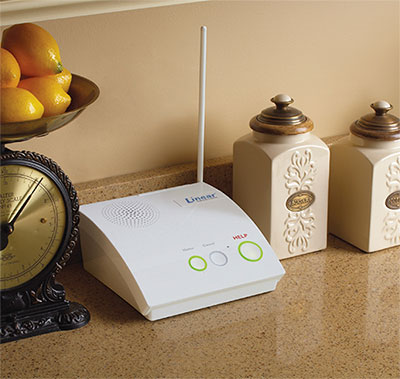 Technology is changing the way people think about long-term care for persons with disabilities and those who want to age-in-place as long as possible, but the potential for PERS and other health and wellness technologies extends far beyond these two groups. When you look at wearable tech and the overall proliferation of personal safety and health products, it’s a very trendy category still in its infancy. But the question remains, how do I break in?
Technology is changing the way people think about long-term care for persons with disabilities and those who want to age-in-place as long as possible, but the potential for PERS and other health and wellness technologies extends far beyond these two groups. When you look at wearable tech and the overall proliferation of personal safety and health products, it’s a very trendy category still in its infancy. But the question remains, how do I break in?
Don’t be afraid to enter the market, even with no experience. People go to great lengths to provide security for their homes and businesses, so it’s a reasonable jump for security dealers to offer a device that monitors and protects an individual’s personal safety. Although some of the same principles of safety and security apply when selling PERS, generally, it’s a different customer base with different challenges that require sensitivities.
From a market perspective, it’s no secret that the Boomer generation is aging, and the sheer number of people who will benefit from PERS and home health technologies will grow exponentially over the next decade. This predictable increase in demand is driving a lot of the innovation and awareness of PERS products. Also, age is no longer a major factor in technology adoption. In fact, my 90-year-old mother has a smart phone, is active on her PC and has a PERS system. Older generations are more interested than ever in technology that helps them stay at home healthfully, without changing their lifestyles.
Sometimes it comes down to a family member trying to convince an independent-minded loved one that a PERS is necessary for them to avoid moving to an assisted living facility. Overcoming fears about the technology or obtrusiveness can be a challenge, but if you understand how to react empathetically, it can go a long way towards building trust and a PERS business. It’s often a more personal decision than choosing an alarm system for the home. You are selling peace-of-mind for family, friends and caregivers to know a backup is always in place.
Demand of PERS
There’s no disputing that people over 70 make up the greatest segment of PERS users, but there’s increased demand from places you wouldn’t expect. One random example is 24-hour gyms that are often unstaffed at night. For an added layer of security without staff present, individuals can work out with PERS pendants and feel safer that help is a button push away.
People of any age with disabilities or medical conditions will live safer, more comfortable lives with the help of technology. I’ve even heard of a wife buying her accident-prone husband a PERS after one too many trips to the emergency room. As an industry, we need to stop pigeon-holing PERS as a solution for elderly people at risk of falling and expand our thoughts to a broader health and wellness offering.
The Hardware
 Once you’ve made the commitment and understand your market, it’s time to figure out the hardware. It’s really quite amazing how much PERS consoles can do these days. In addition to emergency response, you can connect heat, CO2 and smoke alarm sensors and set up verbal reminders. To simplify operation, some PERS consoles actually speak to a subscriber with alerts, setup options and supervisory prompts, remind them to take medications, meet a scheduled ride, prepare for an appointment, and more.
Once you’ve made the commitment and understand your market, it’s time to figure out the hardware. It’s really quite amazing how much PERS consoles can do these days. In addition to emergency response, you can connect heat, CO2 and smoke alarm sensors and set up verbal reminders. To simplify operation, some PERS consoles actually speak to a subscriber with alerts, setup options and supervisory prompts, remind them to take medications, meet a scheduled ride, prepare for an appointment, and more.
Traditionally, PERS devices have relied on landlines to communicate with a central station, but as more landlines go unused in favor of cellular connections, PERS solutions are adapting by offering a seamless upgrade to cellular. Besides providing fast data and two-way communication, cellular connections serve as a safety net for subscribers, helping them stay connected during a phone or power outage. Of course, having both connections is the best option, which is also possible.
Another exciting feature is the emergence of remote speaker phone functionality, which extends two-way voice interaction to other areas in a house or facility to expand a PERS device into a communication hub, as well.
Transmitters also come in different shapes and styles, with different feature sets too. They can be wristbands, pendants, belt attachments or even appear as jewelry. Some transmitters can detect falls while others cannot. It’s important to consider the battery life of the transmitter and if it’s waterproof.
Finding the right PERS solutions really depends on the lifestyle of the person using it, so ask questions that will help you make the best recommendation. It’s also important to mention that in today’s environment, insurance companies do not currently pay for the equipment. Subscribers should expect to pay an installation fee and a monthly PERS monitoring charge so cost can be a factor. PERS device repair and replacement policies should also be considered.
Choosing a Central Station
Once you’ve decided on hardware, it’s time to choose a central station that answers emergency response calls. Some PERS products give you different options; others rely on a specific response center (central station). Your chosen center will have a contact list and will contact the appropriate emergency service, a family member, neighbor or caregiver in the case of an emergency, so ask the manufacturer and anyone who might have an educated opinion on the best response center services available. After all, they are representing your company and could play a critical role in saving someone’s life.
Perhaps most important is understanding the segment you are selling to and the sensitivities that come along with it. There are many great caregiving websites with helpful information about technology, trends and the challenges involved. Consider whether you’ll be working with care facilities, individual PERS users, or both, and choose products accordingly.
Additionally, determine a reasonable but profitable pricing model. Once set, there’s a real opportunity to become the local expert on the topic, just like with traditional security. Areas with a large aging-in-place population or a high concentration of nursing homes, assisted living facilities, military bases, and long-term treatment centers can really benefit from the expertise, while generating a steady flow of RMR for your business.
With PERS, you are really selling a service and a safer mindset for customers and their loved ones. Knowing how to identify sales opportunities and how to approach individuals or organizations about the topic is just as important. We have courses through our training site that teach dealers specifically about PERS technology and how they should approach sales and training.
The segment is only going to grow so understanding the challenges, opportunities and technology today can lead to a profitable new business segment tomorrow.